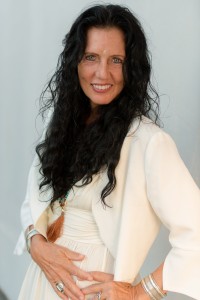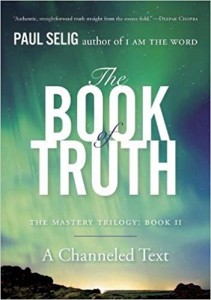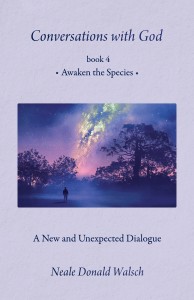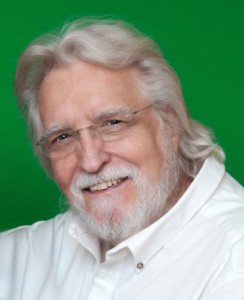Living a Balanced, Beautiful Life With Ayurveda
Imagine you’re outside by a beautiful lake, enjoying the perfection of your surroundings. You feel comfortable, relaxed, as if you are an important part of it all. You are so in tune that it is as if you can hear nature speaking to you.
You see a swan glide past, and the swan is thinking to itself, “How wonderful it is to be a swan. I can take my time. Life is serene. I am graceful and lovely. All is right with the world.”
And then you notice an eagle flying high overhead, and the eagle is thinking, “Ah, what a joy it is to be an eagle. I am strong and free. This is the life!”
A hummingbird flits past, and you can hear the hummingbird is thinking, “I’m having so much fun on this glorious day. There’s so much to see and do. I’m so glad I’m a hummingbird and can move easily to all the things I love.”
Everything in nature has a purpose. We’re all connected. Sitting amongst the trees and looking at the clear blue sky you know that you are an important part of this connection. You breathe deeply and feel an overwhelming sense of gratitude and peace.
Now, imagine you’re in that same place, same time. When you hear nature speaking to you, things are a bit different.
You see a swan glide past, and the swan thinks to itself, “Oh, my. Why am I stuck being a swan? I would so much rather be like that little hummingbird. I want to flit around like that! I feel so dumpy just floating here on this silly lake.”
Then the eagle flies overhead, and you read its thoughts, “Wow. Look at that swan down there. He’s got the good life. Why can’t I just hang out on the lake? Instead I’m up here working so hard. This isn’t fair. I’d rather be a swan.”
Then the hummingbird flits by and thinks, “Really? That eagle is so lucky. She’s way up there with a great vantage point. She can go so far without even flapping her wings. I’m down here pumping away a million beats a minute! Man, I want to be an eagle.”
Somehow, this second scenario just doesn’t make sense, does it? Because this is not how nature operates! And yet, this is exactly what we do as human beings all the time. We fight our own nature. We compare ourselves to one another. We think we need to always be thinner, more beautiful, more successful, more something, anything! When the truth is that we are inherently perfect. If we are carrying around excess weight or stress or feeling bad about ourselves, it is because we are out of balance, our lives are out of balance in one way or another. We can find that perfect state of balance and regain our strength and confidence and energy to be the best that we can be.
The most important thing we can do for ourselves, to be our healthiest and happiest body, mind and spirit, is to know who we are. Some of us are swans, some of us are eagles and some of us are hummingbirds. Each being is valid, each being has value and each being brings his or her unique gifts to the world. When we know ourselves, and our own nature, we allow the best of ourselves to shine through. Nature operates through us. So why are we fighting it?
Ayurveda is the 5,000 year old “science of life” from India. It explains the nature of everything in the universe. It teaches us how to live in harmony with nature, knowing the connections that we share. Ayurveda is all about balance, and this is something we are in dire need of today.
There are a lot of things that take us away from our state of balance. We are overstressed and overworked. We overeat and are overweight. We overexert ourselves and overspend so that we end up tired, hungry, in debt and living in a mess. Look at all the extra “stuff” we carry around with us. We need to lighten up! We need to shed the stress, the pounds, the debt and the distractions and focus on what is good for us, what serves us. Food is a huge part of all this. We use food to soothe our emotions and to fill up our tummies when we feel a lack in some part of our lives. We fall into habits, with food and otherwise, that we think are easy, and they become mindless and robotic so that we don’t see any other possibilities or potential for ourselves.
It’s time to get back to nature, to get back to basics, to get back into balance. And what better way than by turning to a practice that has been tried and true for all these centuries? Ayurveda is a “sister science” with yoga and meditation. As we experience the benefits of these practices in our lives we naturally want to learn more — and that’s where Ayurveda is positioned right now.
Twenty years ago or so here in the West, feng shui was a somewhat foreign concept — but now it’s a part of our everyday vernacular. If you haven’t heard of Ayurveda yet — now you have! And if you haven’t lived the Ayurveda lifestyle yet, I encourage you to try it now.
Lots more info in my new book: “The Perfect Balance Diet: 4 Weeks to a Lighter Body, Mind, Spirit & Space” and on my new website: perfectbalancediet.com
For more by Lissa Coffey, click here.
For more on mindfulness, click here.











 About the Author: Ilona Selke is an international bestselling author, seminar leader, lecturer, musician and CEO/cofounder of Living from Vision. Over 30+ years, Ilona has inspired thousands of people worldwide to discover the power of their consciousness and create a successful life. Her new book “Dream Big: The Universe Is Listening” offers real-life stories of transformation as well as practical tips anyone can use to shapeshift their lives from the inside out. For more information, visit
About the Author: Ilona Selke is an international bestselling author, seminar leader, lecturer, musician and CEO/cofounder of Living from Vision. Over 30+ years, Ilona has inspired thousands of people worldwide to discover the power of their consciousness and create a successful life. Her new book “Dream Big: The Universe Is Listening” offers real-life stories of transformation as well as practical tips anyone can use to shapeshift their lives from the inside out. For more information, visit 
 Yes—and it’s huge
Yes—and it’s huge